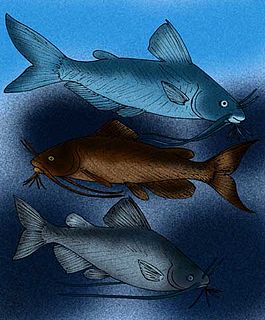 W
WAndinichthyidae is a prehistoric family of catfishes from the Cretaceous to Eocene of South America.
 W
WArchaeomaenidae is an extinct family of stem-teleost fish found in freshwater environments of Jurassic New South Wales of Australia, China, and Antarctica, and in Lower Cretaceous New South Wales and Mongolia.
 W
WBajaichthys elegans is an extinct Lutetian zeid from the Monte Bolca Lagerstätten.
 W
WBirgeria is a genus of carnivorous marine ray-finned fish from the Triassic period. Birgeria had a global distribution. Fossils were found in Madagascar, Spitsbergen, Germany, Switzerland, Italy, Slovenia, China, Russia, Canada and Nevada, United States. The oldest fossils are from Griesbachian aged beds of the Wordie Creek Formation of East Greenland.
 W
WCaturidae is an extinct family of fishes ranging from Late Permian to Upper Cretaceous.
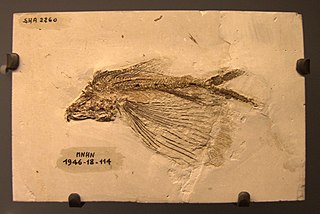 W
WCheirothricidae is a family of extinct bony fish, perhaps belonging to the Aulopiformes. They lived in the Upper Cretaceous and their fossil remains were found in the Middle East and Europe. They were characterized by very expanded even fins.
 W
WCoccodontidae is a family of extinct pycnodontid fish that lived during the lower Cenomanian. The various genera had massive, curved spines.
 W
WCoccolepididae is an extinct family of ray-finned fish, known from the Early Jurassic to Early Cretaceous, most of which were originally referred to the type genus Coccolepis. They had a widespread distribution, being found in North and South America, Australia, Asia and Europe. They are mostly known from freshwater environments, though several were marine. They are morphologically conservative, and have poorly ossified endo and exoskeletons, which usually results in poor preservation. This makes it difficult to distinguish species. They are generally small fish, with the largest known specimens reaching a length of 210 mm. Historically, they have been classified as members of “Palaeonisciformes”, a paraphyletic grouping of all non-neopterygian fish, due to their plesiomorphic conservative morphology closely resembling those of many other groups of primitive fish. They have been suggested to be relatives of the Acipenseriformes within the Chondrostei.
 W
WColobodontidae is an extinct family of marine stem-neopterygian fish known from the Middle to Late Triassic of Asia and Europe. As currently defined, it contains three genera: Colobodus, Crenilepis and Feroxichthys. The colobodontids were medium-sized, somewhat deep-bodied fishes with a durophagous diet. Like many other stem-neopterygians, they have traditionally been placed in the order Perleidiformes, which is now thought to be paraphyletic.
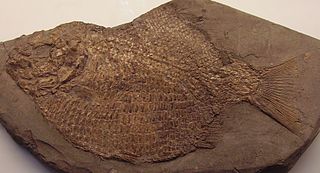 W
WDapediidae is an extinct family of neopterygian ray-finned fish that lived during the Triassic and Jurassic periods. It is the only family of the order Dapediiformes. Its members were historically placed within the ginglymodian family Semionotidae, but were moved to their own family in 1966.
 W
WEuzaphlegidae is a family of extinct escolar-like fish closely related to the snake mackerels. Fossils of euzaphlegids are found from Paleocene to Late Miocene-aged marine strata of Europe, the Caucasus Mountains, India, Iran, Turkmenistan, Italy, and Southern California.
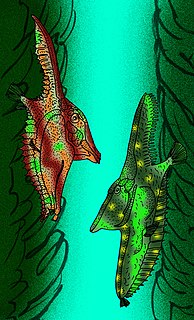 W
WGebrayelichthyidae is a family of extinct pycnodontid fish, with a superficially shrimpfish-like appearance that lived during the lower Cenomanian.
 W
WGuildayichthyidae is a prehistoric family of marine fish from the Mississippian Bear Gulch Limestone of Montana. It is the only family in the order Guildayichthyiformes. Guildayichthyids possess an uncommon mixture of primitive and modern characteristics in their skull bones.
 W
WLepidotidae is an extinct family of fish, known from the Jurassic and Cretaceous periods. Most species were originally assigned to the genus Lepidotes which was long considered a wastebasket taxon. Cladistic analysis has indicated that they are close relatives of gars, with both being members of the order Lepisosteiformes. Members of the family are known from both marine and freshwater environments.
 W
WLeptolepidae is an extinct family of herring-like stem-teleost fish found throughout the world during the Jurassic. They were among the first fish to possess certain teleost synapomorphies, such as cycloid scales and fully ossified vertebrae.
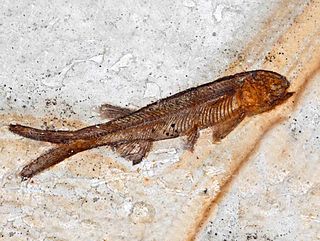 W
WLycopteridae is an extinct family of freshwater osteoglossomorph ray-finned fishes.
 W
WPalaeoniscidae is a family of fish that possessed a bony skeleton and operculum. This group of fish appeared in the Silurian, and died out in the Cretaceous.
 W
WPeipiaosteidae is an extinct family of fish, known from the Late Jurassic and Early Cretaceous of Asia. It is considered to be a member of Acipenseriformes, related to sturgeons (Acipenseridae) and paddlefish (Polyodontidae). Fossils have been found in China, Russia, Kazakhstan, and Mongolia. They are generally considered either the earliest diverging group of Acipenseriformes, or the sister group to the clade containing Acipenseridae and Polyodontidae.
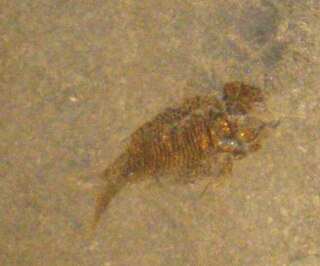 W
WPeltopleuridae were an extinct family of prehistoric bony fish. It is classified with the order Peltopleuriformes.
 W
WPlethodidae is an extinct family of teleost fish that existed during the Late Cretaceous period. Fossils are known from North America, North Africa, and Europe.
 W
WPycnodontidae is an extinct family of ray-finned fishes, ranging from the Triassic period until the Eocene.
 W
WSaurichthyiformes is an extinct order of ray-finned fish which existed in Asia, Africa, Australia, Europe and North America, during the late Permian to early Middle Jurassic. Saurichthyiiformes comprise two families, Saurichthyidae and Yelangichthyidae. Whereas Yelangichthyidae is monotypic, Saurichthyidae includes at least two genera, Saurorhynchus and the very speciose Saurichthys. Additionally, the subgenera Costasaurichthys, Eosaurichthys, Lepidosaurichthys, and Sinosaurichthys are frequently used to group species. Saurichthyiforms were highly successful predators, and with Yelangichthys possibly even included durophagous forms. Species are known from both marine end freshwater deposits. They had their highest diversity during the Early and Middle Triassic.
 W
WSinamiidae is an extinct family of ray-finned fish. They are halecomorph fishes endemic to Early Cretaceous freshwater environments in eastern Asia.
 W
WSpinacanthidae is an extinct prehistoric family of tetraodontid bony fish that lived from the Lutetian epoch of Eocene Monte Bolca.
 W
WThoracopteridae is an extinct family of prehistoric bony fish; classified with the order Peltopleuriformes. This lineage of Triassic flying fish-like Perleidiformes converted their pectoral and pelvic fins into broad wings very similar to those of their modern counterparts. However, this group is not related to modern flying fish from the family Exocoetidae, However, this group is not related to modern flying fish from the family Exocoetidae, being a case of convergent evolution.